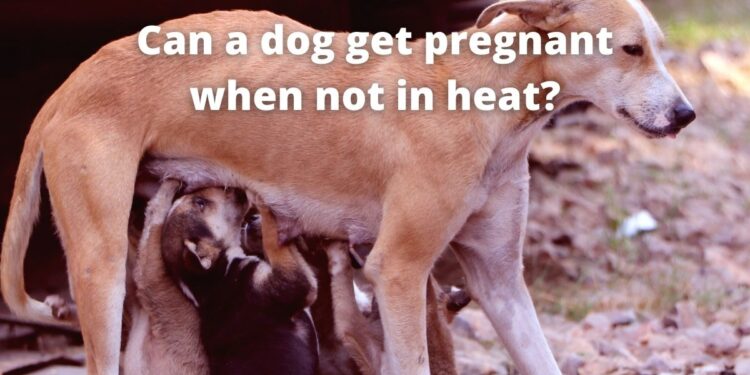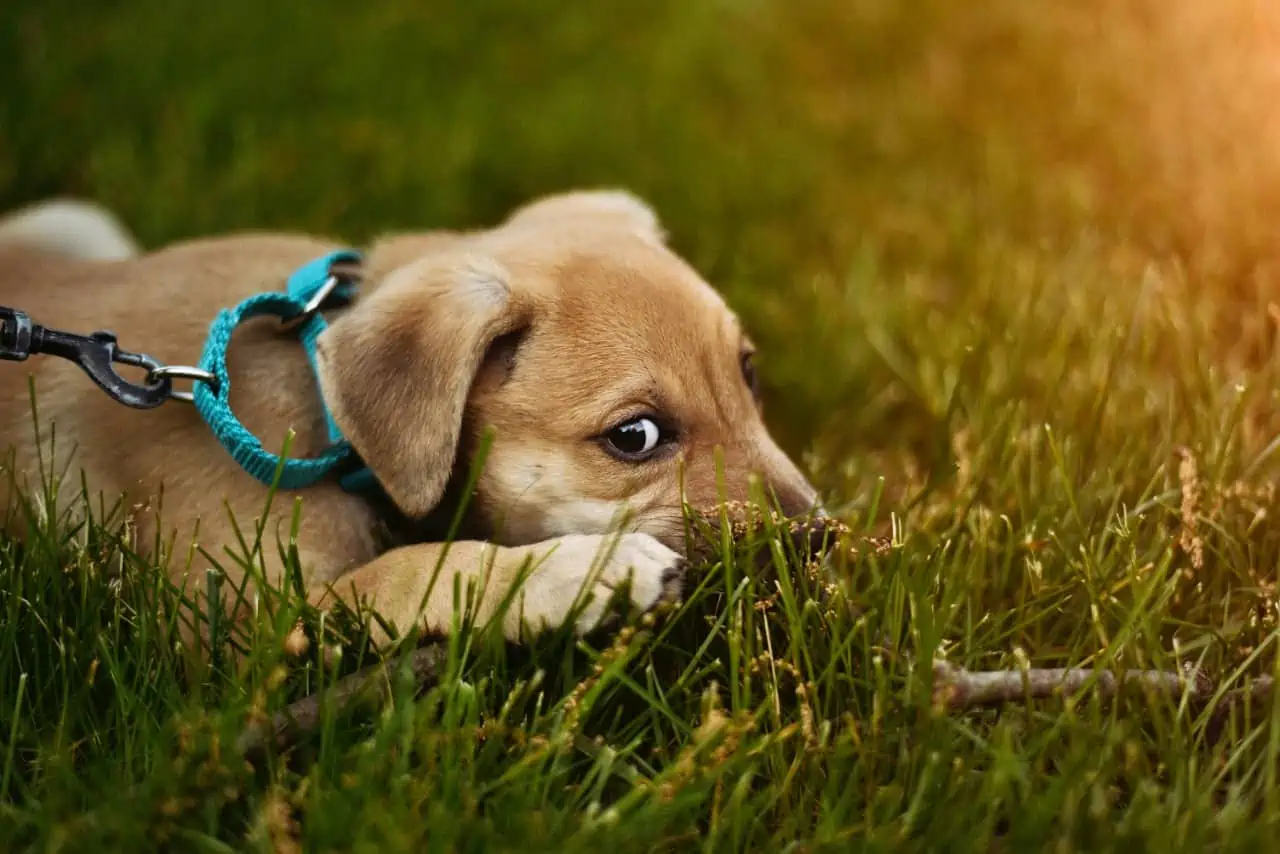Unless going through heat, a female dog can never get pregnant in case of an accidental mating. Their lady parts are not ready then to nurture the arrival of male semen, and hence there is nothing to worry about.
Previously we read that a female canine goes through four stages of the estrus (reproductive) cycle that are highly crucial for them to be fertile and have puppies. These stages continue until they reach a certain age that may vary from one breed to another. And while a successful fertilization takes place only when they are in heat, the cycles can be rather difficult to ascertain and hence lead to wrong calculations.
So, if you are worried about your canid getting pregnant without your knowledge, here are a few pointers that you should know about.
Table of Contents
Understanding a Dog’s Reproductive Cycle
Categorized into four stages, always remember that the ‘Estrus cycle’ is the one which determines their fertility period. All the rest are either pre or post-fertility phases where the female canine won’t show much inclination towards male dogs.
-
Proestrus
As the name suggests, Proestrus is when the female’s body starts undergoing hormonal and physical changes. Estrogen levels peak all time high with their uterus preparing for the next cycle. Their vulva gets swollen with blood tinges appearing on their cervical walls. This is often denoted as the canine version of menstruation, but apart from the reference there is nothing similar to human kind of periods.
During this phase, the females get more restless, urinate more frequently and typically avoid interactions with males. They might also whine or lick their lady parts excessively due to the hormonal changes that make them very uncomfortable for these 9 days.
-
Estrus
Next is the Estrus. Greatly varying in duration from breed to breed, a typical estrus can range from 4 to 24 days. This cycle is marked by the gradual decline in the production of estrogen and a sky-high spike in progesterone levels. The canid is now receptive to male dog advances and can perform a successful mating.
Physically speaking, their vulva may still seem soft and swollen with way less blood discharges. The ovaries have completed their work of prepping up and releasing the eggs, and hence if mating occurs, there is a higher chance of fertilization.
-
Diestrus
Usually ranging between 60-100 days for normal canids and 56-58 days for pregnant ones, the diestrus starts with low estrogen and high progesterone levels in their body. The blood discharge is now much more reduced with their vulva returning to their normal appearance.
No matter if they are pregnant or not, the female won’t be responding to courting males and their advances and may even snap back when forced too much.
-
Anestrus
Finally, Anestrus is the last phase of the female canine reproductive cycle. The vulva is no more swollen, has nil vaginal bleeding and even the hormones are down to their normal levels. This time is also referred to as their ‘reproductive quiet time’, as males won’t be running behind your lovely pooch trying to make their way inside them. So, your lady will be ultimately able to enjoy some ‘me time’ for 4 to 5 months before the next cycle begins.
So why does a dog’s nipples get bigger when in heat?
Also popularly known as a phantom pregnancy, this generally happens when the pup is passing through the third phase of its reproductive cycle, i.e., the diestrus. Even though your lady might not have conceived, their body symptoms and behavior may make you feel otherwise.
All of the heightened amounts of progesterone could make their nipples go large and even express some milk when pressed. This however doesn’t mean that your canid is pregnant as it may also happen with unmated females. Apart from that some weight changes may also be seen, with they seeming to gain a few more pounds than normal.
All of these changes are normal and eventually die down if there hasn’t been a proper mating, and therefore pet parents don’t need to be worried.
Are there any other causes for the same?
In worst cases, your female pooch may be suffering from Pyometra, a high-risk fatal disease in dogs. The secondary infection occurs due to increased thickening of the uterine walls, which further causes improper contraction of the uterus, allowing microbes and other harmful bacteria to pass into the deeper parts.
This in turn creates painful cysts within the uterine tissues that make them really uncomfortable. And the symptoms which come after that often match to those of the phantom pregnancy ones, and hence could easily create confusion.
Some of the telltale signs and symptoms of pyometra in K9s that match include:
- Vomiting
- Lethargy
- Increased thirst
- Frequent urination
- A faint bloody discharge
- Gradual swelling of the abdomen
- And lastly, an increasing body temperature
This condition can easily go haywire if kept untreated for long, not to mention that your female would also have to deal with the excruciating pain. So, if there has been no mating or you aren’t sure of what’s going on, make sure to visit the vet and let your beloved furbaby go through all necessary tests to be 100 percent sure.
Because always remember, ‘Prevention is better than cure.’
How to be sure if my female dog is in heat?
Even though understanding the canine reproductive cycle may not be as easy as it seems, there are a few conditions that can aid you track your pooch’s heat period. These include:
-
Bleeding from the Vagina
Hands down, a bleeding vagina is the first sign that your dog is starting its reproductive cycle. However, unlike us humans they don’t bleed pools of blood, rather their discharges are rather limited to a few drops along their cervical line. So, the next time you find specks of blood lying here and there, you know what to do.
-
Increased Male attention
Another fail-proof method to know if or not your little lady is in heat is to notice male dog behaviors. You may start noticing mounting trials or sudden aggression and clinginess in your perfectly docile and well-trained male pupper, if you have a female in heat at home. The same also goes for other males that may try to break into your yard, given the luring pheromones left by your female canine.
Rarely some canines may also exhibit what we call a ‘silent heat.’ This is when due to certain underlying conditions, the female woofer’s body won’t even show any signs of a typical estrus cycle, but still attract males and incur pregnancy if mated within that period. And here also the only solution would be to notice the behavior of male pups near your pooch.
-
Change in behavior
All thanks to the raging hormones inside your beloved lady’s body, you may also start noticing many behavioral and personality changes. These changes are temporary and may be the complete opposite of what and how they normally behave. For instance, a not-so-friendly female may suddenly start clinging on to its male friends or start showing affection and extreme clinginess to its owners. Some females may also start nesting, a practice where they find a place to deliver their babies safely in case the mating happens.
-
Use Ovulation Kits
A rather newly developed product, using dog-specific ovulation kits also comes handy if you want to make sure your dog is in heat. Unlike the ‘calendar method’ where you physically count your canine’s entry into their reproductive cycle, these kits are specially designed to measure the estrogen and progesterone levels in their body. Thus, if you are looking for an easy way out of this whole ordeal, investing in these kits can be the best option.
For more subscribe us on spanieldogs.com.
If you are a dog lover then, Subscribe to our weekly newsletters. No Spams!








